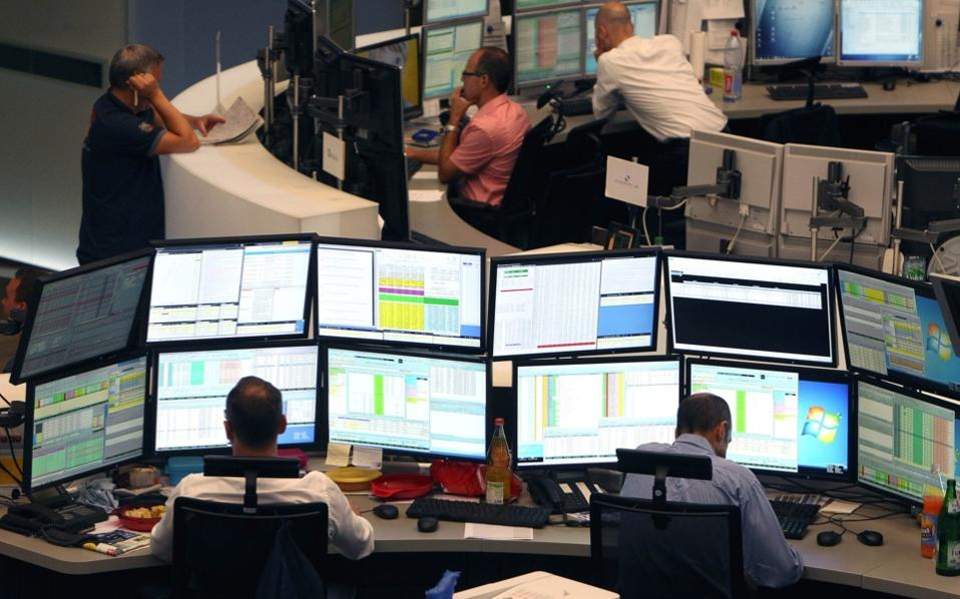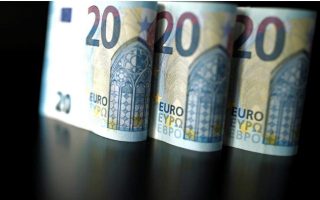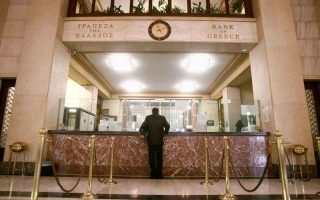Analysts not worried by Greek yield rally

The recent bond rally internationally, triggered by the Joe Biden growth package of $1.9 trillion in the US, also had Greek bond yields jump by almost 100% from the January lows. However analysts do not seem to be concerned about the course of the Greek bonds and spread nor about the sustainability of the national debt; in fact they discern several supporting factors for Greece.
Nicola Mai, Executive Vice President and Head of European Macro and Sovereign Analysis at PIMCO, sees no threat but stability for Greek bonds: “We see stability in the Greek government bond market despite very elevated debt levels given ECB support, very large payments from the EU Recovery Fund from mid-year, and good relations between Greece and Europe. I don’t see the rise in real interest rates as a significant threat at this juncture,” he tells Kathimerini.
Ioannis Sokos, Fixed Income Research Director at Deutsche Bank, says “the fact that the rise in Greek yields is part of a broader move higher in yields across all eurozone countries is an important factor because it increases the odds that the ECB might respond to that tightening in financing conditions, and step-up the pace of its purchases.”
He adds to Kathimerini that “the reassuring factors for Greece are that i) the rise in yields is systemic and not idiosyncratic to Greek government bonds (GGBs), ii) GGBs are and will be PEPP-eligible and the ECB could respond to the rise in real yields soon, iii) the broader move higher in yields is driven by positive economic surprises, progress on the vaccine roll-out and reflationary forces, all of which are positive from a debt sustainability perspective. The negative aspect of higher yields for Greece is that some of the recent strong demand for GGBs was the result of deeply negative yields found elsewhere, forcing investors to search for some yield pick-up in ‘weaker’ countries,” Sokos cautions.
“All in all, I am not worried about debt sustainability at this stage. I think what will be critical in the near-term is the most efficient and effective use of the EU Recovery Fund resources and the continuation of structural reforms which would lead to further rating upgrades,” he argues.
Analysts expects some action from Frankfurt, arguing that the ECB simply cannot let the market without giving it a direction. “The ECB is very focused on financing conditions, and will adjust PEPP purchases to keep the real rate in check. Some increase in rates due to an improvement in the economic outlook will likely be tolerated, but a sustained increase would likely be offset by easier policy,” says Mai.
“Let’s not forget that PEPP has a 1.85 trillion-euro firepower and full flexibility as to when and how it will deploy this,” responds Sokos: “So far we’ve only seen a verbal intervention by President Lagarde, but the recent rise in real yields – which for us are a more important variable than nominal yields from a monetary policy perspective – is very likely to force the ECB’s hand rather sooner than later.”
Director and Senior European Economist at HSBC Global Banking and Markets Fabio Balboni warns against too much volatility: “We do not think that the current steepening of the yield curve is a bad thing per se, from an economic perspective and also ultimately for countries, particularly if they will be able to use domestic and European (NGEU) resources to fulfill the market’s expectations of higher growth and inflation. Debt sustainability could actually improve as a result. The problem, however, is what to replace yield control with,” he tells Kathimerini.
“The ECB Council stressed the need to focus on many variables to assess financing conditions, from the exchange rate to the availability of credit. Such a broad definition of financial conditions might buy the ECB some time, but it does not make it easy for investors to understand the ECB’s reaction function. So leaving the market without a clear anchor could lead to volatility which could be detrimental to future growth prospects,” Balboni points out.
“Furthermore, if countries cannot generate sufficient growth and start consolidating their public finances, yield curves could soon start to flatten again for the core, as the market prices out any possibility for the ECB to be able to increase rates, but high-debt periphery countries could see their spreads increase. Without growth, this could put debt sustainability at risk, re-igniting a vicious cycle of austerity, GDP contractions, and even higher borrowing costs, and the ECB might not have too much firepower left in the tank to prevent this,” he concludes.





